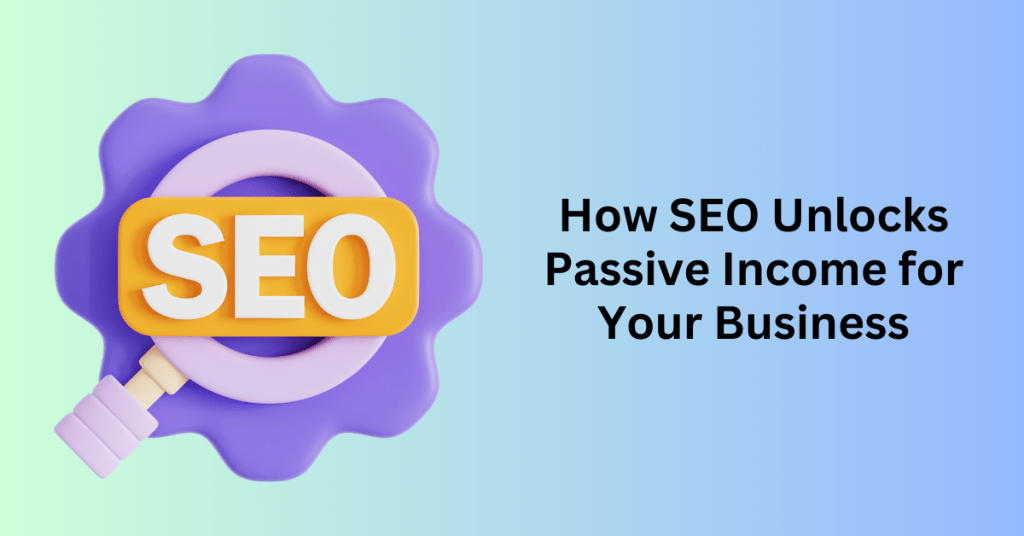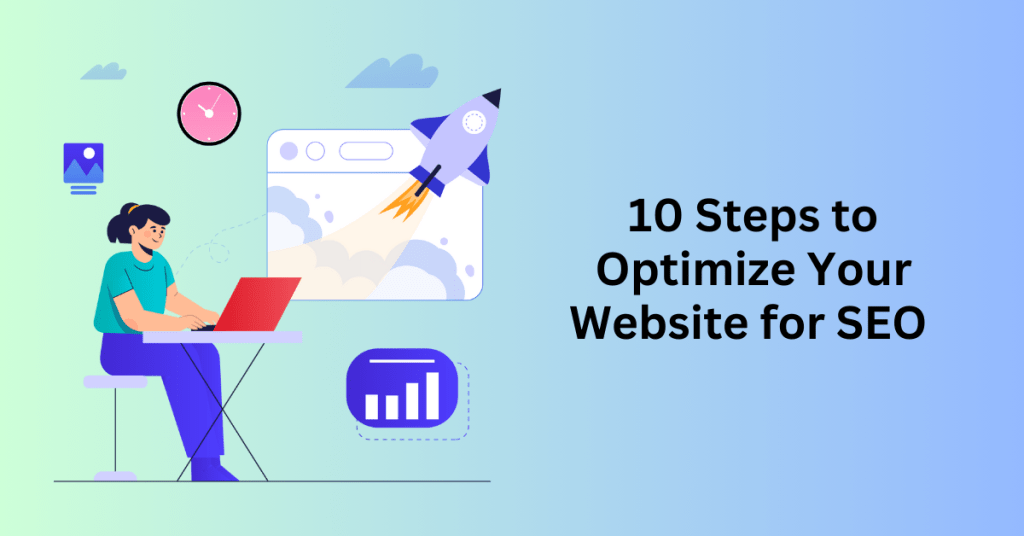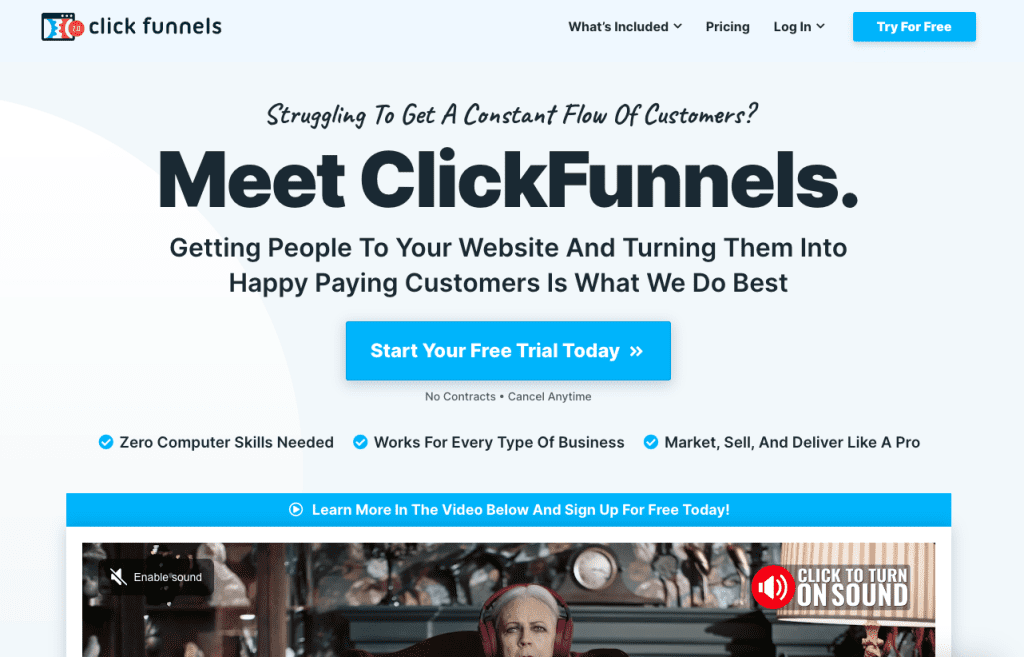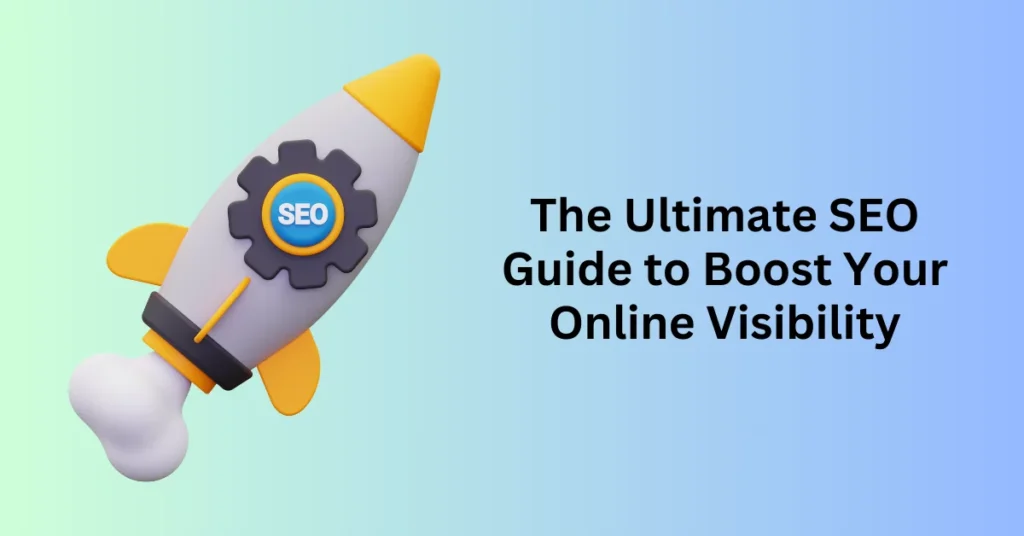In today’s digital world, standing out online is essential for success, whether you’re running a small business or managing a personal brand. Search Engine Optimization (SEO) plays a critical role in ensuring your website or content reaches the right audience. But with ever-changing algorithms and the constant evolution of search trends, mastering SEO can feel overwhelming. This guide is designed to demystify SEO and provide you with practical strategies to enhance your online visibility, drive organic traffic, and boost your search engine rankings.
Whether you’re a beginner looking to understand the basics or an experienced marketer seeking advanced techniques, this comprehensive SEO guide will walk you through everything you need to know. From keyword research to on-page optimization, link-building tactics, and performance tracking, we’ll cover it all. By the end of this guide, you’ll be equipped with the tools and knowledge to elevate your website’s presence and stand out in an increasingly competitive online landscape.
Why You Should Focus on SEO?
Growing a business is no small feat. You’ve invested countless hours, sleepless nights, and relentless effort into turning your passion into something profitable. Naturally, for many, this journey leads to the dream of leaving behind a traditional 9-to-5 job. However, as you scale your business, the challenges don’t simply disappear; instead, they evolve.

Once your sales funnel starts generating results, scaling should logically become the next step. Yet, for many entrepreneurs, ramping up ad spend doesn’t lead to the freedom they envisioned. Instead, it creates a new problem: the constant need to babysit paid ad campaigns.
You may have thought that success would mean more time to focus on growing your business or enjoying the life you’ve worked so hard to create. However, instead of that, it feels like you’re back at square one, glued to dashboards, adjusting bids, and troubleshooting performance issues.
So, what’s going wrong? Is your funnel the problem? Or is there a deeper issue at play?
Rest assured, you’re not alone in this struggle. Many online entrepreneurs encounter the same wall when they rely exclusively on paid traffic. Russell Brunson, co-founder of ClickFunnels, highlights this common pitfall in his book Traffic Secrets. He emphasizes the importance of diversifying your traffic sources in order to avoid becoming overly dependent on paid ads.
At first glance, paid ads may seem like the perfect solution for quick, predictable traffic. However, if you want to build a business that delivers consistent, scalable, and passive income, you’ll need to adopt a different approach.
Why You Can’t Solely Relying on Paid Ads
When all your traffic comes from paid ads, your business becomes vulnerable to factors beyond your control: rising ad costs, ad fatigue, and increased competition.
Let’s break down why relying solely on paid ads can keep your business stuck:
- Fierce Competition for Attention
In the online world, competition is inevitable. Even if your product or offer is unique, competitors will eventually emerge. As more businesses enter the space, ad costs rise, and it becomes harder to stand out. The battle for visibility can feel like an uphill struggle, draining both your time and resources. - Ad Fatigue Hurts Performance
No matter how great your ad is, audiences will eventually grow tired of seeing it. This phenomenon, known as ad fatigue, reduces engagement and conversion rates over time. To maintain results, you’re forced to continually refresh creatives, craft new campaigns, and test new messaging—turning into a never-ending cycle. - Campaign Management is All-Consuming
Running paid ads isn’t a set-it-and-forget-it process. It requires ongoing attention: monitoring performance, adjusting budgets, split-testing creatives, and optimizing bids. This level of hands-on management leaves little time to focus on other areas of your business, like product development or exploring alternative revenue streams. - No Ads, No Traffic
Paid ads are a pay-to-play strategy. The moment you stop spending, your traffic dries up. There’s no long-term residual benefit. Every sale comes at a direct cost, leaving you trapped in a hamster wheel of needing to reinvest to keep the wheels turning. - Missing Out on a Goldmine of Organic Traffic
Organic traffic, particularly from search engines, accounts for 53% of all trackable website visits, according to Fit Small Business. By focusing solely on paid ads, you’re missing a significant chunk of potential customers who could discover your business through unpaid channels like SEO, social media, and content marketing.
The Way Forward: Breaking Free from Paid Ads Dependence
While paid ads have their place, they should never be your only source of traffic. A diversified approach is key to creating a sustainable business. Organic traffic, in particular, offers a powerful alternative. Not only does it reduce your reliance on ad spend, but it also delivers long-term benefits that continue to grow over time.
In the next section, we’ll explore how leveraging SEO can transform your business, providing you with the scalable, passive income you’ve been striving for. With the right strategies, you can finally break free from the time-draining cycle of managing paid ads and build a business that works for you—not the other way around.
How SEO Unlocks Passive Income for Your Business

Relying solely on paid ads can be exhausting and expensive, draining both your time and resources. But what if there was a way to grow traffic and sales without the relentless need to spend more on paid channels?
The good news is that there is—and it’s not just wishful thinking. Options like word-of-mouth marketing, social media engagement, and email marketing are valuable, but there’s one strategy that stands out for its scalability and long-term impact: SEO (Search Engine Optimization).
According to a Search Engine Journal poll, 49% of marketers say SEO delivers the highest ROI among all marketing channels. It’s not just an option; it’s a game-changing strategy for sustainable growth.
SEO’s power lies in its ability to provide sustainable, high-quality traffic without the constant drain of ad spend. Let’s explore five reasons why SEO works so well for online businesses:
Sustainable, Long-Term Traffic
Unlike paid ads, which stop delivering results the moment you pause your budget, SEO provides a long-term, sustainable solution. Over time, it builds a steady flow of visitors to your site without requiring constant reinvestment. Once you secure top rankings on search engines, your content works tirelessly for you, driving traffic around the clock.
Consider this: research from Ahrefs reveals that 60% of pages ranking in the top 10 search results are over three years old. This statistic highlights the enduring power of well-optimized content. With a solid SEO strategy in place, you can create content once and enjoy its benefits for years, as it continues to generate leads or sales on autopilot.
This approach not only ensures a consistent stream of traffic but also frees up your time, allowing you to focus on other essential aspects of your business while your content works behind the scenes.
Intent-Driven Traffic
Paid channels like Facebook Ads often rely on interrupting users during their scroll. In contrast, people turn to search engines because they’re actively looking for solutions. This means visitors from organic search are more likely to convert—they’ve already expressed interest in solving a problem your business addresses.
Reduced Need for Constant Funnel Creation
With an effective SEO strategy in place, you no longer need to constantly reinvent your sales funnel to maintain results. Instead, you can focus on building a strong, evergreen funnel specifically optimized for organic traffic. Over time, this funnel will consistently work for you, month after month, without requiring frequent updates or new campaigns. As a result, the pressure to continuously launch fresh initiatives diminishes, allowing you to allocate your time and resources toward other growth opportunities.
Fuel for Retargeting Campaigns
SEO doesn’t just drive organic traffic—it also amplifies the effectiveness of your paid campaigns. For example, visitors acquired through SEO can be retargeted with precision, enabling you to craft high-performing lookalike audiences on platforms like Facebook. This synergy between organic and paid strategies significantly reduces ad costs while boosting conversion rates by focusing on users who are already familiar with your business. By leveraging this combination, you can create a more efficient and impactful marketing strategy that maximizes results.
A Competitive Edge
In the world of paid ads, success often hinges on outspending the competition, creating an uneven playing field for smaller businesses. However, SEO levels the playing field by prioritizing quality and relevance over budget size. With the right optimization techniques, you can secure top search positions and reach your ideal audience without the constant pressure to outbid competitors.
Now, imagine the transformative impact of a steady stream of organic traffic. Instead of constantly increasing your ad budget to maintain visibility, leads or sales would flow in consistently, providing stability and growth potential. Moreover, your time wouldn’t be consumed by the ongoing demands of campaign management. Instead, you could focus on scaling your business, refining your strategies, and exploring exciting new opportunities to expand your reach.
Addressing the SEO Objection: “It Takes Too Long”
It’s true that SEO is often seen as a long-term strategy, but that doesn’t mean it has to take forever to show results. With the right approach, you can start seeing tangible improvements within three months.
In the next section, we’ll break down how to implement an SEO strategy effectively so you can accelerate your results and begin reaping the rewards sooner rather than later.
10 Steps to Optimize Your Website for SEO

SEO success doesn’t happen overnight, but with the right strategies, you can start seeing meaningful improvements in just three months. Follow these 10 actionable steps to ensure your website is optimized for search engines and ready to attract organic traffic.
1. Manually Index Your Website on Google
The first and most critical step in driving organic traffic is ensuring your website is indexed by Google. Indexing allows search engines to recognize your site and include it in search results. While Google often crawls websites automatically, manually indexing your site ensures that new or updated pages are recognized quickly, giving your SEO efforts a head start.
- Why It’s Important: Without indexing, even the best SEO strategies are ineffective since Google doesn’t know your site exists.
- How to Do It:
- Create an account on Google Search Console and verify your website domain.
- Simplify the process by setting up Google Analytics first, then connecting it to your site.
- If you’re comfortable with a bit of coding, use a meta tag to verify your site.
- Once verified, submit your sitemap.xml to ensure Google can crawl all your important pages.
Proactively indexing your site gives you control and accelerates visibility, ensuring your SEO strategy delivers results faster.
2. Create a Coherent Site Structure
A well-organized site structure is essential for both search engines and users. It defines how your website’s content is arranged, making it easier for visitors to navigate and for search engines to understand your site’s hierarchy.
- Why It’s Important: A confusing or poorly organized site can frustrate users and make it difficult for Google to identify and rank your pages effectively. A clear structure enhances user experience and signals to search engines which pages hold the most value.
- How to Create It:
- Homepage: The central hub of your site should link to the most important category pages.
- Categories: Break your content into logical categories, each addressing a specific topic or service.
- Subpages: Each category should link to detailed subpages or posts. These subpages should be interlinked to guide both users and crawlers naturally through your site.
- Use descriptive URLs and breadcrumbs to further enhance navigation.
Example:
If you run a baking blog:
- Homepage: Links to “Recipes,” “Tips & Tricks,” and “Product Reviews.”
- Recipes Category: Links to subpages like “Cupcakes,” “Bread,” and “Cookies.”
A coherent site structure ensures that your audience can easily find what they need while helping search engines index your content efficiently, ultimately improving rankings.
3. Make Your Website Easily Crawlable
Crawlability is the process of ensuring search engine bots can easily access, analyze, and index the content on your website. Without proper crawlability, even the most valuable content may remain hidden from search engine results, significantly impacting your rankings.
- Why It’s Important: Blocked pages, broken links, or overly complex URLs can hinder search engines from navigating your site effectively. If bots struggle to access your content, it won’t be indexed or ranked.
- How to Improve Crawlability:
- Create a sitemap.xml file: This file serves as a roadmap for search engines, listing all the important pages on your site.
- Submit your sitemap to Google Search Console: This ensures Google is aware of your site structure and can crawl your pages efficiently.
- Optimize your robots.txt file: This file tells search engine bots which pages they can or cannot crawl. Avoid blocking essential pages.
- Fix broken links: Use tools like Ahrefs or Screaming Frog to identify and resolve broken or redirected links.
- Simplify your URLs: Use short, descriptive URLs without unnecessary parameters or complexity.

By making your site easily crawlable, you enhance its accessibility to search engines, improving your chances of ranking higher in search results.
4. Conduct Keyword Research
Keywords are the foundation of SEO, representing the phrases and terms your target audience uses when searching online. Identifying and targeting the right keywords ensures that your content aligns with what potential customers are looking for.
- Why It’s Important: Without proper keywords, your content might never appear in relevant search results, no matter how informative or well-written it is.
- How to Conduct Effective Keyword Research:
- Start with Broad Terms: Begin by identifying general topics related to your business or niche.
- Example: “Protein powder.”
- Drill Down to Long-Tail Keywords: Use tools like Google’s autocomplete, SEMrush, or Ubersuggest to find more specific, less competitive terms.
- Example: “Protein powder for women weight loss.”
- Analyze Keyword Metrics: Focus on keywords with:
- High intent: People searching for these terms are more likely to make a purchase or take action.
- Low competition: These are easier to rank for, especially for smaller or newer websites.
- Create Targeted Content: Develop blog posts, landing pages, or product descriptions around these long-tail keywords.
- Start with Broad Terms: Begin by identifying general topics related to your business or niche.
Example Breakdown:
- Short-tail keyword: “Protein powder” (high competition, generic audience).
- Long-tail keyword: “Protein powder for women weight loss” (lower competition, highly targeted audience).
The Trade-Off:
While long-tail keywords have lower search volumes, they often bring in highly qualified traffic. Because they target specific queries, ranking for them can lead to faster results—sometimes within three months—making them an excellent choice for driving early sales and visibility.
By incorporating keyword research into your SEO strategy, you align your content with what your audience is searching for, increasing your chances of attracting the right traffic and converting visitors into customers.
5. Optimize Meta Information
Meta information, such as meta titles and descriptions, is critical for driving clicks from search engine results pages (SERPs). These snippets provide a snapshot of your page’s content, helping users decide whether to visit your site. Well-optimized meta info not only improves your click-through rate (CTR) but also signals to search engines what your page is about, potentially boosting your rankings.
Tips for Crafting Effective Meta Titles and Descriptions:
- Keep Meta Titles Under 60 Characters: This ensures they aren’t cut off in SERPs. Make titles concise yet descriptive, incorporating your target keyword naturally.
- Example: “Best Protein Powder for Women Over 50 | Healthy Living”
- Write Meta Descriptions Between 150-160 Characters: Use this space to provide a compelling reason for users to click. Highlight unique benefits or solutions your page offers.
- Example: “Discover the top protein powders for women over 50. Boost your energy, support muscle health, and achieve your fitness goals today!”
- Focus on Relevance and Engagement: Use action words to encourage clicks, and ensure the meta info aligns with the page’s content.
- Include Keywords Strategically: Incorporate your target keyword naturally, as this reinforces your page’s relevance to search engines and users.

By optimizing your meta titles and descriptions, you not only make your site more appealing to users but also help search engines understand your content better, increasing your chances of ranking and earning clicks.
6. Master On-Page SEO
On-page SEO involves fine-tuning individual web pages to rank higher and attract more relevant traffic. It encompasses elements like title tags, header tags, images, and internal links, all of which play a role in how search engines interpret your content.
Key Elements of On-Page SEO:
- Incorporate Your Target Keyword: If you’re optimizing for a term like “protein powder for women over 50,” include it in strategic locations:
- Meta title and description
- Main title (H1 tag)
- Subheadings (H2, H3 tags)
- Throughout the content, but avoid keyword stuffing
- Enhance Readability: Break up content with clear headings, bullet points, and short paragraphs to improve user experience and engagement.
- Optimize Images: Use high-quality, relevant images that support your content. Add descriptive file names and include keywords in alt text.
- Example: Instead of IMG123.jpg, use protein-powder-for-women-over-50.jpg.
- Internal Linking: Link to other relevant pages on your site to keep users engaged and help search engines understand the relationship between your pages.
- Example: On a blog about protein powder, link to a related post like “Top 10 Recipes Using Protein Powder.”
- Write Quality, In-Depth Content: Search engines prioritize pages that thoroughly address the user’s query. Aim for comprehensive, well-researched, and engaging content.
By implementing these on-page SEO strategies, you’re not only improving your page’s visibility in search results but also creating a better experience for visitors, making them more likely to stay, engage, and convert.
7. Optimize for Core Web Vitals
Core Web Vitals are Google’s way of measuring how user-friendly your website is. These metrics directly impact your rankings because they reflect how well your website performs for visitors. The three main metrics are:
- Largest Contentful Paint (LCP): Measures loading performance. Aim for your page’s largest visible content (like images or text) to load within 2.5 seconds.
- First Input Delay (FID): Measures interactivity. Ensure users can interact with your site (e.g., click a button or type in a form) within 100 milliseconds.
- Cumulative Layout Shift (CLS): Measures visual stability. Prevent elements on your page from shifting around unexpectedly to keep the CLS score below 0.1.
Steps to Improve Core Web Vitals:
- Optimize Images: Compress images using tools like TinyPNG or ImageOptim. Serve images in next-gen formats like WebP for faster loading.
- Use a Fast Hosting Provider: Invest in a quality hosting service to reduce server response times.
- Enable Browser Caching: Use caching plugins like WP Rocket or W3 Total Cache to store static assets.
- Minify Resources: Compress CSS, JavaScript, and HTML files to reduce their size.
- Lazy Load Elements: Defer offscreen images and videos until users scroll down to view them.
Regularly test your site using Google PageSpeed Insights and prioritize fixing flagged issues. Investing in improving Core Web Vitals ensures better rankings, lower bounce rates, and higher engagement.
8. Create High-Quality Backlinks
Backlinks remain one of the most influential ranking factors in SEO. When reputable websites link to yours, it signals to Google that your site is trustworthy and authoritative. However, not all backlinks are created equal—quality always trumps quantity.
Strategies for Building High-Quality Backlinks:
- Guest Blogging: Write valuable content for reputable blogs in your industry and include a link to your website in the author bio or within the content (if relevant).
- Collaborate with Influencers: Partner with influencers or industry leaders who can mention your site or link to it in their content.
- Create Link-Worthy Content: Publish unique, high-quality resources like infographics, research studies, or comprehensive guides that others will want to reference.
- Leverage PR Opportunities: Pitch stories about your business to journalists or use platforms like HARO (Help a Reporter Out) to get featured on news sites.
- Broken Link Building: Find broken links on relevant websites and suggest replacing them with links to your content. Tools like Ahrefs or SEMrush can help identify these opportunities.
Best Practices for Backlinking:
- Focus on Relevance: Ensure the linking site’s content aligns with your niche.
- Avoid Spammy Links: Stay away from paid links or low-quality directories, as these can harm your rankings.
- Diversify Your Backlink Profile: Build links from various sources, including blogs, forums, social media, and professional networks.
By steadily acquiring backlinks from authoritative sources, you’ll improve your website’s domain authority, boost search engine rankings, and drive referral traffic.
9. Create Topic Authority
Becoming a trusted source of information in your niche is critical for SEO success. Topic authority is achieved when search engines recognize your site as an expert resource on a specific subject.
How to Build Topic Authority:
- Create a Comprehensive Content Strategy: Cover your niche in-depth by writing on a variety of subtopics.
- Target Both Commercial and Informational Keywords:
- Commercial Keywords focus on driving sales (e.g., “protein powder for women over 50”).
- Informational Keywords provide value and answer questions (e.g., “Should menopausal women use protein powder?”).
Use tools like Google’s “People Also Ask” or AnswerThePublic to find commonly asked questions.
- Interlink Related Content: Connect blog posts with internal links to guide readers through a logical progression of topics. This improves user experience and helps search engines understand the relationship between your pages.
By addressing both user intent and creating authoritative resources, your website becomes a go-to hub for your target audience, boosting rankings and conversions.
10. Create Brand Authority
Brand authority is about building trust and recognition for your business. When users and search engines see your brand as reliable, your SEO benefits significantly.
Steps to Build Brand Authority:
- Engage with Your Audience:
- Be active on social media platforms and respond to comments and questions.
- Host webinars or live Q&A sessions to connect with your audience directly.
- Leverage Guest Appearances: Appear on podcasts, write guest posts, or collaborate with industry leaders to increase visibility.
- Consistently Deliver High-Quality Content: Publish actionable, well-researched, and visually appealing content that adds real value to your audience.
- Build a Strong Online Presence Across Channels: Maintain consistency in branding, tone, and messaging across your website, social media, and email campaigns.
- Encourage User-Generated Content: Customer testimonials, reviews, and social media shares build credibility and enhance your brand reputation.
Key Takeaway:
SEO is a long-term strategy that rewards commitment and consistency. If you’re sure about scaling your current business for years to come, implement these steps to create a sustainable, passive income stream through SEO. For those still experimenting with different business models, focus on short-term validation through paid ads before committing to long-term SEO efforts.
If you’re ready to scale now, follow all ten steps outlined here. Within three months, you’ll begin to see measurable traffic increases—and ideally, more sales!
Why ClickFunnels is the Critical Tool for Making Your SEO Strategy Work
Imagine this: your SEO strategy is finally paying off. You’ve indexed your site, perfected its structure, optimized for keywords, and now organic traffic is steadily increasing. Visitors are landing on your site, engaging with your content, and everything seems to be on track.
But then you notice a problem.
Despite your SEO efforts and traffic growth, your revenue isn’t where it needs to be. People are visiting, but they aren’t buying.

While SEO is excellent for driving traffic, it doesn’t guarantee conversions. Your organic visitors need guidance and persuasion to turn into paying customers.
This is where ClickFunnels becomes your secret weapon.
ClickFunnels is designed to convert traffic into sales using highly optimized funnels. Let’s explore how this critical tool ensures your SEO efforts translate into real results:
1. Optimized Sales Funnels
SEO gets people to your site, but sales funnels guide them through a clear journey from curiosity to purchase. ClickFunnels offers pre-designed, step-by-step funnels tailored to maximize conversions. Example: A visitor lands on your blog post about “The Best Protein Powder for Women Over 50.” Using ClickFunnels, you can direct them to a product-specific landing page, then guide them through an upsell sequence for related items.
2. Built-In A/B Testing
ClickFunnels makes A/B testing simple, allowing you to experiment with different landing page designs, headlines, CTAs, and more. This constant testing ensures that your pages are always improving and delivering the best possible conversion rates.
3. Automation for Lead Nurturing
Not all visitors will convert immediately. ClickFunnels integrates seamlessly with email marketing and CRM tools, allowing you to:
- Automate follow-up emails to nurture leads.
- Retarget visitors with personalized offers.
This keeps potential customers engaged, even if they don’t purchase on their first visit.
4. Templates Designed for Conversion
SEO gets people to your website, but ClickFunnels’ templates are specifically designed to make them stay and take action.
- These templates are crafted to:
- Capture email addresses.
- Highlight the value of your products.
- Simplify the buying process.
5. Upsell and Cross-Sell Capabilities
Once someone makes a purchase, ClickFunnels helps you increase the value to your business with:
- Upsells: Offer premium versions or add-ons.
- Cross-sells: Recommend complementary products.
For example, a customer buying protein powder might be offered a discount on a shaker bottle or a subscription plan for monthly deliveries.
SEO gets you traffic, but ClickFunnels turns that traffic into paying customers.
By combining the two, you’re not just building a website—you’re building a revenue engine.
Try Clickfunnels Free for 14 Days!
Final Thoughts: The Ultimate SEO Guide to Boost Your Online Visibility
SEO is undeniably a powerful tool for building sustainable, passive income. To begin with, by dedicating time and effort to strategies such as keyword research, optimizing site structure, and authority-building, you can attract higher-quality traffic to your website. In contrast to paid advertising, SEO offers a cost-effective solution without the burden of recurring expenses, making it an invaluable asset for long-term success.
To guide you through the process, we’ve outlined a comprehensive 10-step SEO strategy designed to establish a strong foundation for your online presence. However, while SEO is exceptional at driving traffic, it’s crucial to acknowledge that traffic alone won’t pay the bills. This is precisely where the integration of ClickFunnels can completely transform your approach.
ClickFunnels acts as a seamless bridge between attracting visitors and converting them into paying customers. Through its features, such as optimized sales funnels, it guides users from initial interest to final purchase, ensuring a smooth and efficient customer journey. Moreover, its A/B testing capabilities allow you to refine your strategy, tailoring it to better resonate with your audience. On top of that, ClickFunnels offers automation tools that help nurture leads and scale your sales process effortlessly, saving you time and energy.
By effectively addressing the critical gap between traffic and conversions, ClickFunnels doesn’t just complement your SEO strategy—it maximizes its potential. It ensures that your hard work translates into tangible revenue, transforming your business into a well-oiled machine designed to work for you, not the other way around.


